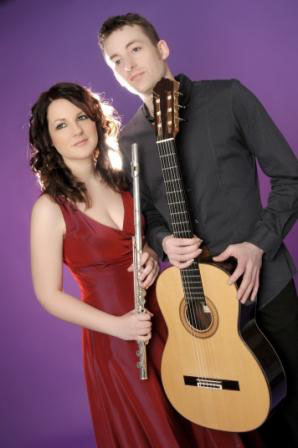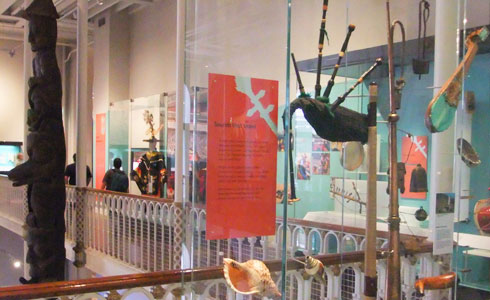On Friday 12 August, as part of the National Museum of Scotland’s lunchtime ‘Free Fringe Music 2011’, the guitar and flute duo, Duende, played to a large and captivated audience. Duende consists of Andrew Robinson on guitar and Yvonne Paterson on flute and the pair specialise in playing South American and Flamenco pieces, aiming to “bring music into unusual places.” They aptly describe themselves as “…an exciting young Scottish duo with Flamenco flair…” Following the performance, I was given the chance to carry out a short interview with Yvonne Paterson.
I asked Yvonne about the band’s name, Duende: a Spanish word with no direct English translation. Yvonne explained that ‘duende’ is intertwined with Flamenco and describes an indefinable moment in music or during a performance where a heightened sense of emotion and expression is felt by all. It is created through music and is equivalent to sensing a shiver down the spine or goosebumps when something connects with your emotions.

Next, we spoke about the relevance of the flute and the guitar to South American and Flamenco music. Yvonne told me that the guitar lends itself to Hispanic and South American music and, thus, this is the repertoire of music which is largely available. Andrew’s guitar is a Flamenco guitar and he has done some work with Flamenco groups. New settings of some South American and Flamenco music have been arranged by the pair to include Yvonne’s flute. However, this is not the case for the band’s entire repertoire. The pieces composed by Argentinean Astor Piazolla were written to include the flute. In Piazolla’s music, the composer wrote percussive “chicca-chicca” noises into the flautist’s part, which require the musician to blow sharply into the instrument rather than over it. Yvonne told me that this could be interpreted as a kind of beat boxing!
During the performance, Duende also played Scottish and Irish tunes, so I asked whether the band’s Scottish origins influenced any of their South American and Spanish pieces. Yvonne told me that influences flow freely through the band’s entire repertoire and that it’s nice to have the freedom to, for example, play traditionally Scottish tunes on a Flamenco guitar. Similarly, throughout the Spanish-speaking world, musical ideas have travelled around. However, on this more international stage, Andrew and Yvonne told me that national and regional styles still tend to retain many of their intrinsic forms.

From listening to Duende’s performance and speaking with Yvonne, I noticed that the theme of dance ran through the music. Much of the South American music had been Tango music, whilst the Spanish music had been Flamenco. This suggested to me that there are some very strong links between dance, community, performance and music in the Spanish-speaking world which could be explored further by the museum. Interestingly, Duende also played an Irish jig as part of their repertoire which could serve as a reminder to us that all cultures have their connections between dance, music, community and performance. Speaking with Yvonne about the meaning of the term Duende also made me ask myself whether the UK has a similar notion, if not a word, for the heightened emotions felt during a performance? If so, what form does this take and where can it be found?
Many thanks to Duende for their performance and to Yvonne Paterson for the interview!
